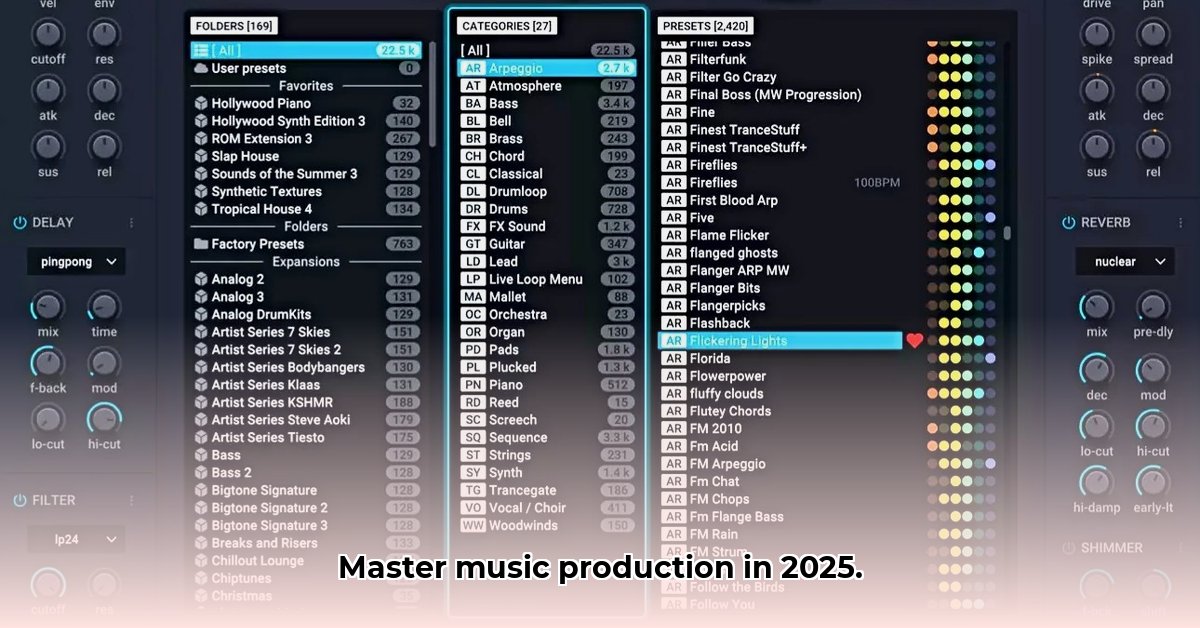
Making music in 2025 is easier than ever, but the sheer volume of available software can be overwhelming. This guide navigates the evolving landscape of music production software, highlighting key trends and offering actionable advice for musicians, producers, educators, and developers.
Key Trends Shaping the Future of Music Production
The music production software market is booming, driven by several significant trends:
Improved UI/UX: Accessibility for All
Modern music production software prioritizes user experience. Tools like Toontrack EZbass and Polygon 2 demonstrate this shift, offering powerful functionalities with intuitive interfaces. This accessibility democratizes music creation, empowering both beginners and seasoned professionals. Why is this important? Because easier-to-use software means more people can create music, leading to a richer and more diverse soundscape.
Analog Modeling & Emulation: The Warmth of Yesterday, the Power of Today
The rich, warm tones of vintage analog equipment are highly sought after. Plugins meticulously recreate these sounds, bridging the gap between classic feel and modern efficiency. Companies like Acustica Audio are leaders in this space. Are these emulations perfectly accurate? Not always, but they capture the essence and character of the original hardware, often adding features modern musicians expect.
Virtual Instruments & Samplers: A Limitless Palette
Virtual instruments (VSTs) and samplers offer vast libraries of sounds, giving producers an unparalleled sonic palette. Kontakt and Babylon are prime examples, providing everything from orchestral hits to gritty synth riffs. How many sounds are too many? The answer is subjective but the sheer variety ensures creative freedom.
Plugin Bundles & Integrations: Streamlined Workflows
Plugin bundles provide several tools at a lower cost than buying individually, often with improved integration. This seamless workflow enhances productivity. Is this a cost-effective choice? Absolutely – a well-chosen bundle can drastically improve both your budget and your workflow.
Actionable Advice for Music Creators
These trends translate into specific actions for various stakeholders:
For Software Developers:
- Prioritize intuitive interfaces: Design software accessible to all skill levels.
- Embrace AI and cloud collaboration: Explore AI-powered tools and real-time collaborative platforms.
- Ensure seamless plugin integration: Prioritize compatibility to enhance the user experience.
For Musicians and Producers:
- Explore new plugins and VSTs: Experiment to discover new sounds and workflows.
- Streamline your workflow: Organize projects efficiently and invest in quality audio equipment.
- Stay updated on industry advancements: The music tech world evolves rapidly.
For Music Educators:
- Incorporate new software into curricula: Teach your students current tools and techniques.
- Develop targeted training programs: Tailor courses to specific software and desired outcomes.
- Encourage creative exploration: Foster experimentation and unique musical styles.
For Hardware Manufacturers:
- Collaborate with software developers: Create hardware that enhances software performance.
- Focus on innovation: Develop products to streamline workflows and boost creativity.
- Prioritize quality and reliability: Hardware forms the foundation of music creation.
Deep Dive: Toontrack EZbass and Polygon 2
Toontrack EZbass simplifies bassline creation, even for beginners, making it a powerful tool for creating polished bass tracks. Polygon 2, a versatile synthesizer, offers sophisticated sound design capabilities, spanning from subtle pads to aggressive leads. These examples highlight the variety and power available today.
The Future of Music Production Software
AI and cloud-based collaboration will likely shape the future, enabling real-time collaboration across geographical boundaries. This opens exciting new possibilities but raises legitimate concerns about copyright and intellectual property protection.
Conclusion
The music production software market is dynamic and innovative. By understanding the key trends and applying the advice offered here, musicians and producers of all skill levels can leverage the latest tools to create amazing music. Embrace change, explore new possibilities, and most importantly, enjoy the creative process.